
Kraken Robotics Appoints Adu as Head of Services Business
engineering, project management, business development, HSSE, and production. "As a global leader in the marine technology sector, Kraken has been attracting talent worldwide from notable companies and organizations such as Ultra Defense, Cenovus Energy, ExxonMobil, Mind Technologies, the Royal Canadian Navy, Turkish Navy, and Technip. As the market for naval defense technologies is seeing strong secular growth, Kraken has been building increased depth in our Business Development and Sales teams," Kraken said.Kraken said that commander Peter Kirkegaard would be migrating to Kraken’s
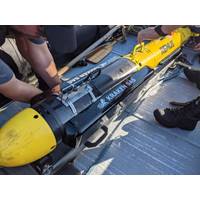
Kraken Wins $50+ Million Contract for Royal Canadian Navy Minehunting
acquisition program followed by an initial five-year Integrated Logistics Support (ILS) program, which includes options for additional equipment, spare parts, training, and technical support.Under the program, Kraken will deliver remote minehunting and disposal systems to His Majesty’s Royal Canadian Navy on the East Coast (located in Halifax, Nova Scotia) and the West Coast (located in Esquimalt, British Columbia). The RMDS consists of two classes of Autonomous Underwater Vehicles (AUVs): Light Weight AUVs and Operator Portable AUVs, all of which will be equipped with Kraken’s AquaPix
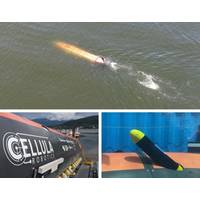
Hydrogen Fuel Cell Powered AUV Demonstrated
;s command and control center via Iridium satellite. The operation was the first of its kind and demonstrated near real-time, over-the-horizon communications from a submerged AUV.The demonstration was observed by representatives from Trusted Autonomous Systems (TAS), the Royal Australian Navy, Royal Canadian Navy, Defense Research Development Canada (DRDC), Defense Science & Technology Group (DSTG Australia) and the Minister of State for Trade, Vancouver-Fraserview, George Chow, as part of Cellula's ongoing work with TAS' SeaWolf program. TAS is Australia's first Defense Cooperative

Kraken's Robotics as a Service (RaaS) Contract with Royal Canadian Navy Deemed 'Success'
Canadian marine robotics company Kraken Robotics Inc. has successfully completed a Robotics as a Service (RaaS) contract with the Royal Canadian Navy, for the testing of Kraken’s ultra-high-resolution survey equipment. This $0.5 million contract was funded under the government of Canada’s Innovative Solutions Canada program, and the testing department for this service offering was the Royal Canadian Navy's Fleet Diving Unit Atlantic (FDU-A) based in Halifax, Nova Scotia. The Royal Canadian Navy has a mandate to develop and maintain an advanced sonar imaging and data storage
Kraken Wins Robotics as a Service (RaaS) Contract from Government of Canada
Kraken Robotics Inc. signed a Robotics as a Service (RaaS) contract with the Canadian government for testing of Kraken’s ultra-high resolution survey equipment with the Royal Canadian Navy (RCN). This $500,000 contract is funded under the Canadian government’s Innovative Solutions Canada program, and the testing department for this service offering is the RCN’s Fleet Diving Unit Atlantic (FDU-A) based in Halifax, Nova Scotia. The RCN has a mandate to develop and maintain an advanced sonar imaging and data storage capability for all three coasts, and to deploy this capability to
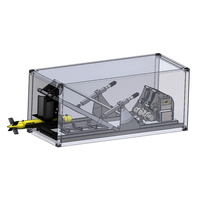
Kraken to Provide MCM Solutions for Denmark's SHD
globally promote and sell containerized subsea surveillance solutions with a variety of Kraken’s surveillance solutions. In Canada, Kraken, supported by SHD, will promote, sell, deliver, install and service SHD hydraulic, electric and mechanical system modular containerized solutions to the Royal Canadian Navy, Canadian Coast Guard and commercial industry.”Today’s global naval operating environment requires navies to increase not only their range into new operating theaters like the Arctic, but also to extend their platform capabilities and to operate more autonomous and remotely piloted
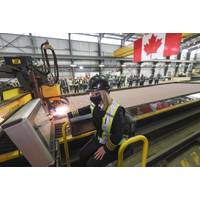
Seaspan Shipyards Begins Building Canada's New Research Ship
the Canadian Coast Guard and Fisheries and Oceans Canada.The 88-meter Offshore Oceanographic Science Vessel (OOSV) is being built under Canada's National Shipbuilding Strategy (NSS) at Seaspan’s multi-program Vancouver Shipyard concurrently with the first Joint Support Ship (JSS) for the Royal Canadian Navy.The OOSV will support oceanographic, fishery, geological and hydrographic survey missions, replacing the CCGS Hudson due to retire in 2024. Hudson was Canada’s first ocean science vessel when it entered service in 1964 and is the longest serving ship in the Canadian Coast Guard fleet
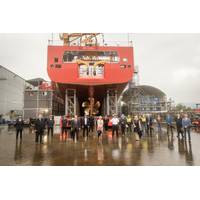
Video: Seaspan Shipyards Launches CCGS John Cabot
, now stationed in Victoria, British Columbia, and CCGS Capt Jacques Cartier, stationed in Dartmouth, Nova Scotia, are the first class of ships built under the National Shipbuilding Strategy (NSS), the Government of Canada’s strategy to renew the fleets of the Canadian Coast Guard and Royal Canadian Navy. Two ships have been delivered and the third launched from Seaspan’s Vancouver shipyard over the course of 13 months.The OFSV is fully equipped to support Fisheries and Oceans scientists in the collection and analysis of data on Canada’s marine ecosystems and the impacts of climate
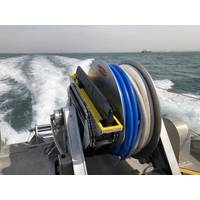
GeoSpectrum Launches TRAPS-USV
, space, complexity and cost. Both TRAPS and TRAPS-USV also have the capability to swap out and exchange active sonar projectors allowing O-level adaptation of the system to different active sonar frequencies in the 2 to 10 kHz range. The containerized version of TRAPS first went to sea onboard Royal Canadian Navy ships in 2019.In commonality with TRAPS, sonar processing for TRAPS-USV is performed by GeoSpectrum’s sensor-agnostic RecView sonar processing capability which was designed for remote / distributed operation


 February 2024
February 2024





